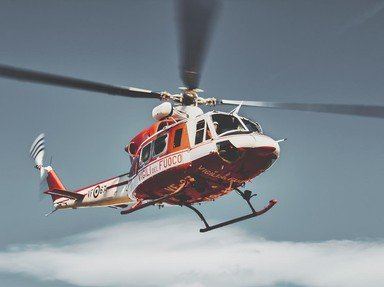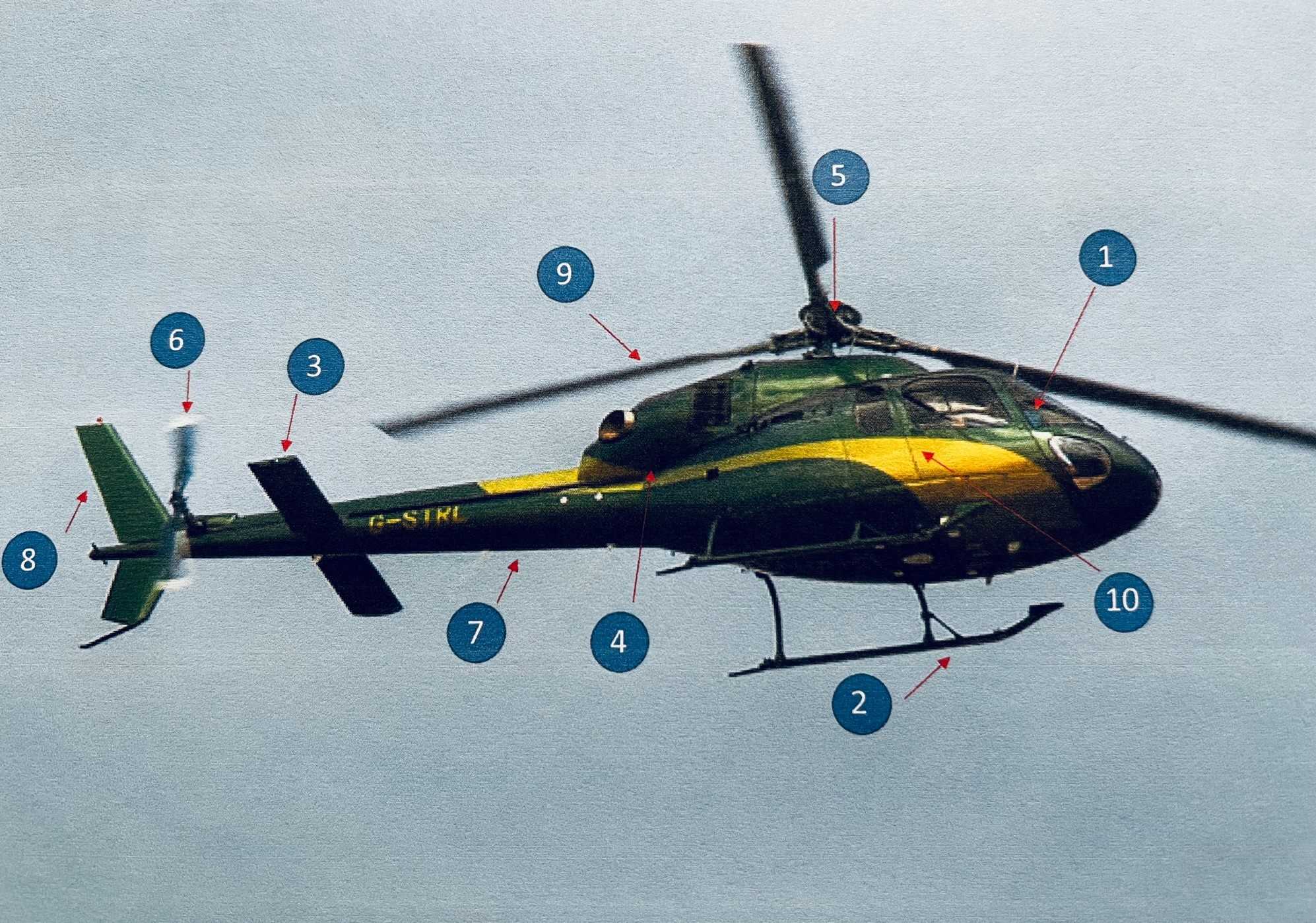
The Remarkable Helicopter Trivia Quiz
Several weeks ago I was fortunate enough to get an hour-long ride in a helicopter. I was astounded and loved every minute. Come learn a little more about the basics of this aircraft.
A label quiz
by stephgm67.
Estimated time: 3 mins.
- Home
- »
- Quizzes
- »
- World Trivia
- »
- Aviation
- »
- Aircraft
